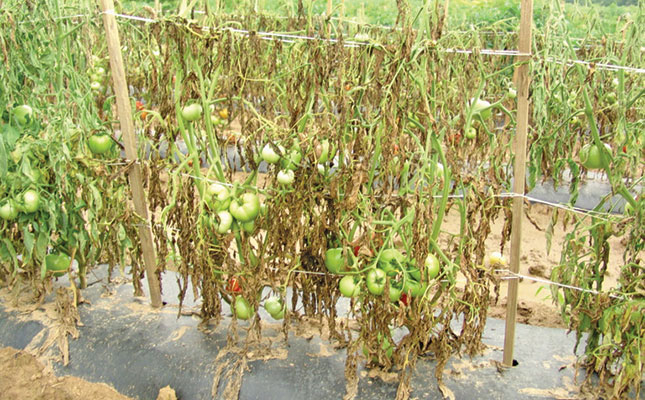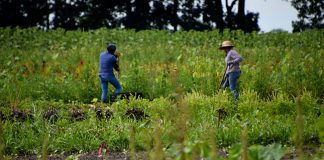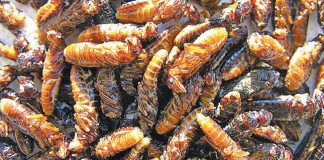
Photo: apps.lucidcentral.org
Bacterial wilt is an extremely destructive disease of tomatoes and more than 200 other plant species. Some may not show symptoms, but they keep the pathogen alive in the soil.
The causal organism is Ralstonia solanacearum, a bacterium found mainly in moist, hot areas.
It is particularly destructive in gravelly and sandy soils.
The bacterium is less prevalent in hot, dry areas, as it dies shortly after drying out. Farmers in bacterial-wilt areas use this knowledge to reduce damage by allowing the soil to dry out when conditions permit.
Some farmers who have clay soils deep-rip their lands in the dry season to prevent moisture from rising by capillary action from below. This causes the topsoil to dry out, killing the pathogen.
Resistant genes
The first sign of R. solanacearum is plants that start to wilt during the day and recover by nightfall. Later, they remain wilted and die. The disease usually starts in patches and spreads fairly rapidly to neighbouring plants. It is almost impossible to control once it takes hold.
Fortunately for farmers, resistant genes are available. However, there are several races of R. solanacearum, with only one occurring in South Africa, namely race 1 biovar 2. It is therefore crucial to choose a tomato variety that has resistance to this race, or it will be ineffective.
If you grow tomatoes during the coolest part of winter in a subtropical area, you might escape damage with a non-resistant variety.
Varieties with the resistant gene can extend the harvest season into warmer conditions, but when the soil becomes too hot, the gene becomes less effective.
Mulching
Bacterial wilt prefers soils with a higher pH. Knowing this, choose land on a cooler slope if possible and avoid sandy soils. It will also help if you mulch the crop, as this lowers the soil temperature. (Mulched crops tend to do better in any case.)
When the first plant starts to wilt, you may suspect damage due to a cutworm or a tip-wilter stink bug. To be sure it’s bacterial wilt, cut off a section of the wilted stem and hang it in a glass of water. Later, you will clearly see milky-white strands of ooze descending from the cut stem to the bottom of the glass.
You can also buy tomato plants grafted onto a resistant variety. These usually have a highly resistant gene.
The resistant gene for race 1 biovar 2 was developed at the Agricultural Research Council station in Mbombela, and the resistant variety is named Rodade. This gene is used by other countries for our strain of the pathogen, and was hailed as a major breakthrough at the time.
Avoid mechanical cultivation near the plants, as damage to the roots can make the plants more susceptible to bacterial wilt.
Bill Kerr is a vegetable specialist and breeder.











